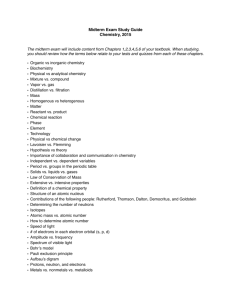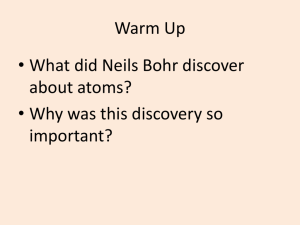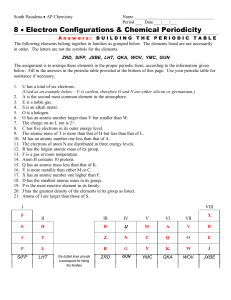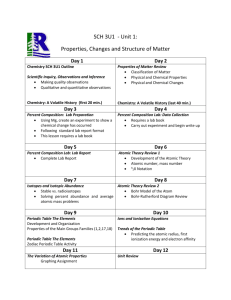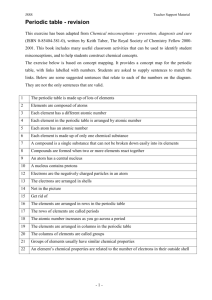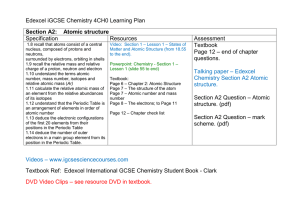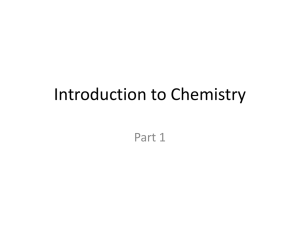Chemistry story line
advertisement
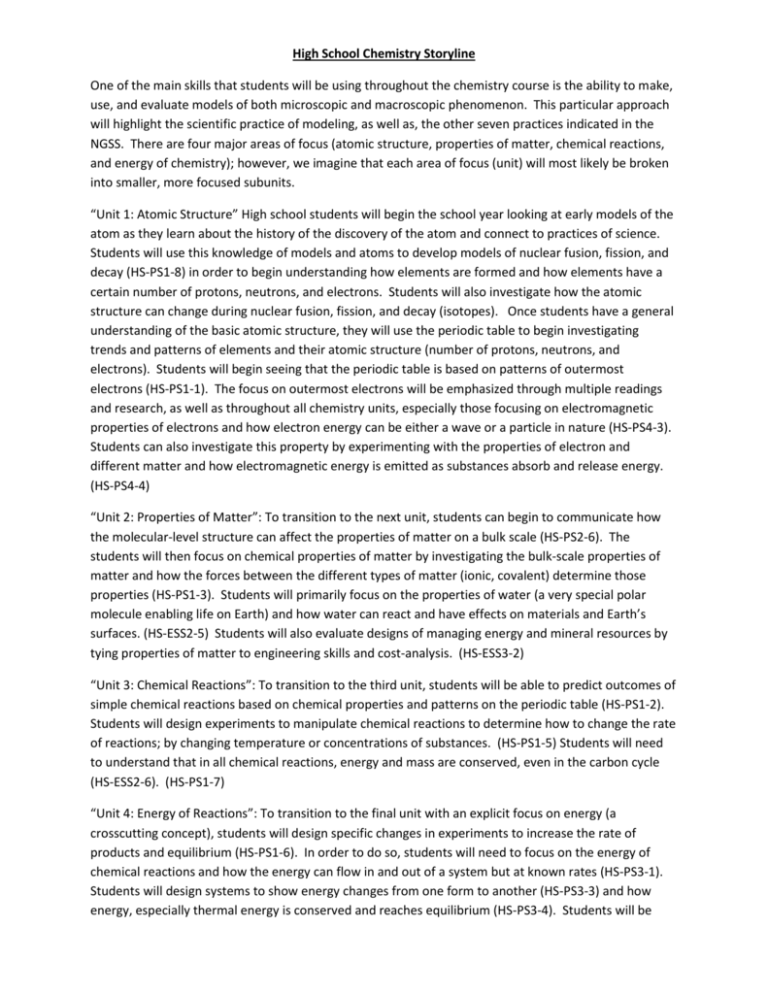
High School Chemistry Storyline One of the main skills that students will be using throughout the chemistry course is the ability to make, use, and evaluate models of both microscopic and macroscopic phenomenon. This particular approach will highlight the scientific practice of modeling, as well as, the other seven practices indicated in the NGSS. There are four major areas of focus (atomic structure, properties of matter, chemical reactions, and energy of chemistry); however, we imagine that each area of focus (unit) will most likely be broken into smaller, more focused subunits. “Unit 1: Atomic Structure” High school students will begin the school year looking at early models of the atom as they learn about the history of the discovery of the atom and connect to practices of science. Students will use this knowledge of models and atoms to develop models of nuclear fusion, fission, and decay (HS-PS1-8) in order to begin understanding how elements are formed and how elements have a certain number of protons, neutrons, and electrons. Students will also investigate how the atomic structure can change during nuclear fusion, fission, and decay (isotopes). Once students have a general understanding of the basic atomic structure, they will use the periodic table to begin investigating trends and patterns of elements and their atomic structure (number of protons, neutrons, and electrons). Students will begin seeing that the periodic table is based on patterns of outermost electrons (HS-PS1-1). The focus on outermost electrons will be emphasized through multiple readings and research, as well as throughout all chemistry units, especially those focusing on electromagnetic properties of electrons and how electron energy can be either a wave or a particle in nature (HS-PS4-3). Students can also investigate this property by experimenting with the properties of electron and different matter and how electromagnetic energy is emitted as substances absorb and release energy. (HS-PS4-4) “Unit 2: Properties of Matter”: To transition to the next unit, students can begin to communicate how the molecular-level structure can affect the properties of matter on a bulk scale (HS-PS2-6). The students will then focus on chemical properties of matter by investigating the bulk-scale properties of matter and how the forces between the different types of matter (ionic, covalent) determine those properties (HS-PS1-3). Students will primarily focus on the properties of water (a very special polar molecule enabling life on Earth) and how water can react and have effects on materials and Earth’s surfaces. (HS-ESS2-5) Students will also evaluate designs of managing energy and mineral resources by tying properties of matter to engineering skills and cost-analysis. (HS-ESS3-2) “Unit 3: Chemical Reactions”: To transition to the third unit, students will be able to predict outcomes of simple chemical reactions based on chemical properties and patterns on the periodic table (HS-PS1-2). Students will design experiments to manipulate chemical reactions to determine how to change the rate of reactions; by changing temperature or concentrations of substances. (HS-PS1-5) Students will need to understand that in all chemical reactions, energy and mass are conserved, even in the carbon cycle (HS-ESS2-6). (HS-PS1-7) “Unit 4: Energy of Reactions”: To transition to the final unit with an explicit focus on energy (a crosscutting concept), students will design specific changes in experiments to increase the rate of products and equilibrium (HS-PS1-6). In order to do so, students will need to focus on the energy of chemical reactions and how the energy can flow in and out of a system but at known rates (HS-PS3-1). Students will design systems to show energy changes from one form to another (HS-PS3-3) and how energy, especially thermal energy is conserved and reaches equilibrium (HS-PS3-4). Students will be able to see the energy of a chemical system is dependent on the total bond energy of different types of compounds. (HS-PS1-4) The engineering, technology, and applications of science performance expectations are not specifically stated throughout the storyline; however, they should all be implemented throughout all units.

